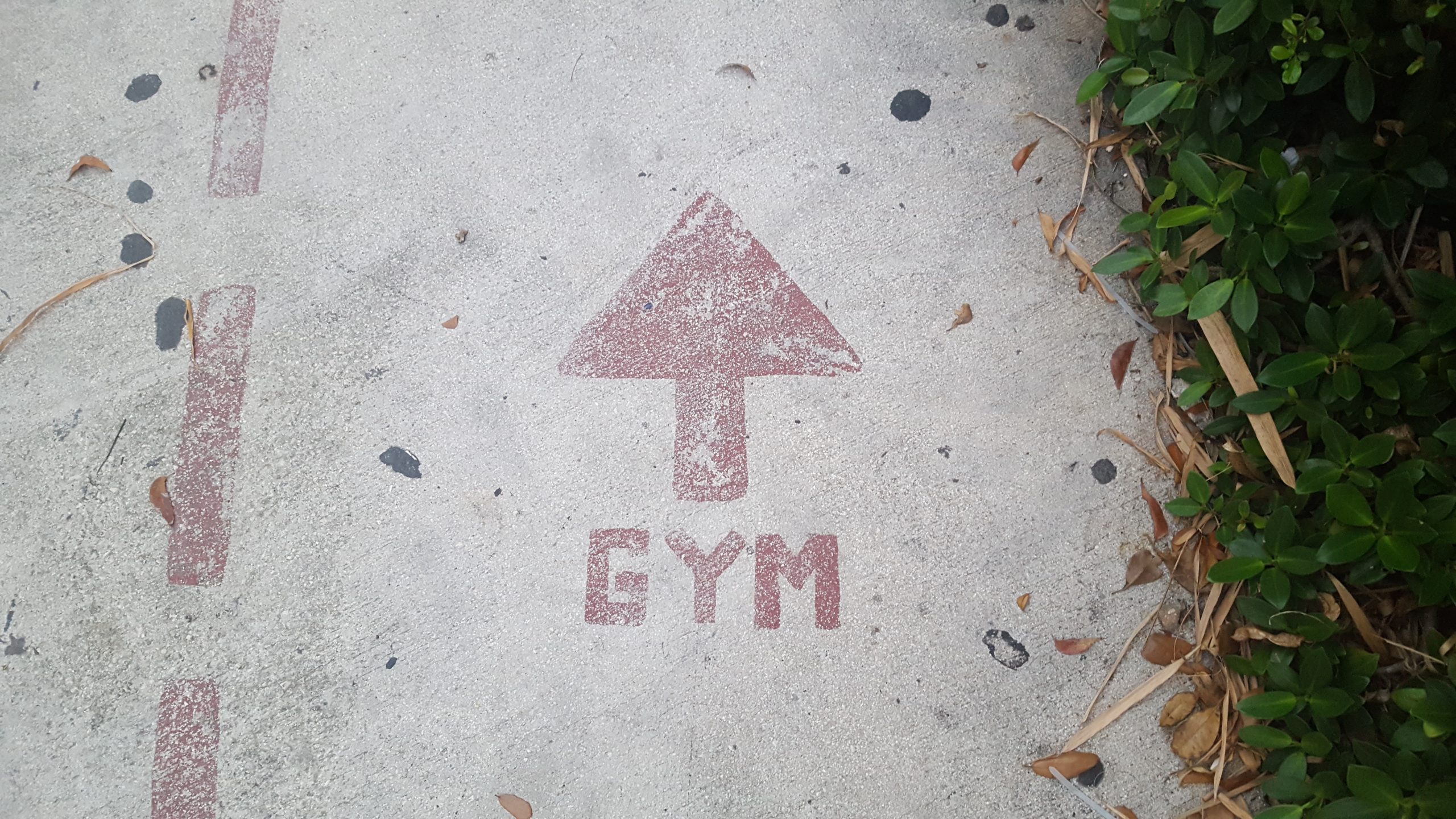Unlock Your Fastest Self: Unveiling the Secrets of Speed Training for Runners
Table of Contents
The Need for Speed
When it comes to running, speed training is an essential component of your training regimen. Whether you’re a beginner or a seasoned runner, incorporating speed training into your routine can help you unlock your fastest self. Let’s explore why speed training matters for runners and the benefits it brings.
Why Speed Training Matters for Runners
Speed training goes beyond simply running longer distances. It focuses on improving your running economy, stride efficiency, and overall speed. By incorporating speed workouts into your training plan, you can enhance your running performance and reach your goals faster.
Speed training helps you develop the ability to maintain a faster pace for longer periods. It improves your anaerobic capacity, enabling you to run at a higher intensity without getting fatigued. Whether your goal is to set a new personal record in a race or simply improve your overall running ability, speed training is key.
Benefits of Speed Training
Speed training offers numerous benefits that can transform your running experience. Here are some of the advantages you can expect:
- Increased Speed: The obvious benefit of speed training is an improvement in your running speed. Regular speed workouts allow you to push your limits and gradually increase your pace.
- Enhanced Endurance: Speed training not only improves your speed but also enhances your endurance. By challenging yourself with interval workouts and tempo runs, you build stamina and the ability to sustain a faster pace for longer distances.
- Improved Running Economy: Speed training helps you become more efficient in your running mechanics. As you work on your speed, you refine your form and become a more economical runner, wasting less energy with each stride.
- Mental Toughness: Speed training pushes you out of your comfort zone, helping you develop mental strength and resilience. It teaches you to embrace discomfort and push through fatigue, which can be invaluable during races or challenging runs.
- Plateau Breaking: If you’ve hit a plateau in your running progress, speed training can help you break through it. By incorporating different speed workouts into your training plan, you challenge your body in new ways, stimulating further growth and improvement.
Remember, speed training should be tailored to your individual fitness level and goals. It’s always a good idea to consult with a running coach or fitness professional to design a speed training program that suits your needs. To learn more about strength training for runners and how it can complement your speed training, check out our article on strength training for runners.
By incorporating speed training into your routine, you can take your running to new heights. Embrace the need for speed and watch yourself become a stronger, faster, and more confident runner.
Building a Strong Foundation
To unlock your fastest self and improve your running speed, it’s essential to build a strong foundation through strength training. Strength training is a critical component of speed training for runners, as it helps improve muscle power, endurance, and overall performance. In this section, we will explore the importance of strength training for runners and highlight key strength exercises that can enhance your speed.
Importance of Strength Training for Runners
Strength training plays a vital role in enhancing running performance by targeting specific muscles used during running and improving their strength and endurance. Incorporating strength training into your routine can yield several benefits, including:
- Improved running economy: Strengthening your muscles helps optimize your running form and efficiency, allowing you to use less energy and achieve faster speeds.
- Increased power: Developing stronger leg muscles enables you to generate more force with each stride, leading to greater propulsion and speed.
- Injury prevention: Strengthening the muscles around your joints, such as your hips, knees, and ankles, can help reduce the risk of common running injuries.
- Enhanced muscular endurance: Building muscular endurance allows you to maintain speed for longer distances, helping you reach your running goals.
To effectively incorporate strength training into your running routine, it’s important to focus on exercises that target the key muscle groups used during running.
Key Strength Exercises for Speed
- Squats: Squats are a fundamental exercise for building lower body strength. They primarily target your quadriceps, hamstrings, and glutes, which are essential muscles for generating power and speed during running. To perform a squat, stand with your feet shoulder-width apart, lower your hips back and down as if sitting into a chair, and then return to a standing position. Aim for 2-3 sets of 8-12 repetitions.
- Lunges: Lunges target your quadriceps, hamstrings, glutes, and calves. They also help improve balance and stability, which are crucial for efficient running. Start by standing with your feet hip-width apart, take a step forward with one leg, lower your body until both knees are bent at a 90-degree angle, and then push back up to the starting position. Repeat on the other leg. Aim for 2-3 sets of 10-12 repetitions per leg.
- Calf Raises: Calf raises focus on strengthening your calf muscles, which play a significant role in providing propulsion and speed during running. Stand on the edge of a step or a raised platform with your heels hanging off the edge. Slowly raise your heels as high as possible, then lower them back down. Aim for 2-3 sets of 15-20 repetitions.
- Planks: Planks are an excellent exercise for core strength, which is vital for maintaining stability and good posture while running. Start in a push-up position, with your forearms on the ground and your body forming a straight line from head to toe. Hold this position for 30-60 seconds, focusing on engaging your core muscles. Repeat for 2-3 sets.
For a more comprehensive list of strength exercises for runners, check out our article on strength exercises for runners. Remember to start with lighter weights or bodyweight exercises and gradually increase the intensity as you build strength. It’s also important to maintain proper form and technique to maximize the benefits of each exercise.
By incorporating strength training into your training plan, you can build a strong foundation that supports your speed and overall running performance. Combine these strength exercises with a well-rounded strength training program for runners, proper nutrition, and adequate rest to unlock your full running potential.
Speed Training Techniques
To unlock your fastest self as a runner, incorporating speed training techniques into your training plan is essential. These techniques focus on improving your running pace, endurance, and overall speed. Here are three effective speed training methods: interval training, fartlek training, and hill repeats.
Interval Training
Interval training involves alternating between periods of high-intensity running and recovery periods of lower intensity or rest. This method is highly effective for improving speed, as it challenges your cardiovascular system and builds endurance.
During an interval training session, you can customize the intervals based on your fitness level and goals. For example, you might sprint at maximum effort for 30 seconds followed by a 1-minute recovery jog. Repeat this cycle for a specific number of sets or time duration.
Interval training not only improves your speed but also enhances your anaerobic capacity and helps you become more efficient at utilizing oxygen. It’s important to gradually increase the intensity and duration of intervals as your fitness improves. This progressive overload approach ensures continuous improvement and minimizes the risk of injury. For more information on designing a speed training program for runners, check out our article on strength training program for runners.
Fartlek Training
Fartlek training, a Swedish term meaning “speed play,” is a versatile and enjoyable speed training technique. This method involves adding bursts of speed and intensity to your regular running routine, making it more dynamic and engaging.
During a fartlek run, you can vary your pace throughout the workout, alternating between faster and slower running segments. You might choose to sprint for a certain distance, such as between two lamp posts, and then recover with an easy jog for a specific duration. This unstructured approach allows you to be creative and adapt the workout to your surroundings, making it a great option for outdoor runners.
Fartlek training not only improves your speed but also enhances your mental toughness and ability to sustain effort over varying distances. By incorporating fartlek sessions into your training regimen, you can break the monotony of steady-state running and make your workouts more challenging and enjoyable. For more information on incorporating cross-training into your routine, check out our article on cross-training for runners.
Hill Repeats
Hill repeats involve running uphill at an intense effort followed by a recovery jog or walk downhill. This training method helps build strength, power, and speed. Running uphill activates more muscles in your lower body, including your glutes, hamstrings, and calves, which are essential for generating power and speed.
To perform hill repeats, find a hill with a moderate to steep incline. Sprint up the hill at a high intensity for a specific distance or time duration. Once you reach the top, recover by jogging or walking downhill. Repeat this cycle for a designated number of sets.
Hill repeats not only improve your speed but also enhance your running economy and strength. The resistance provided by the incline challenges your muscles and cardiovascular system, leading to improved overall performance. Incorporating hill repeats into your training plan can also help prepare you for hilly race courses. For more information on strength exercises for runners, check out our article on strength exercises for runners.
By incorporating interval training, fartlek training, and hill repeats into your training plan, you can take your running speed to new heights. These speed training techniques will not only improve your overall speed but also enhance your endurance and running efficiency. Remember to incorporate these workouts gradually and listen to your body to prevent overexertion and injury. Lace up your running shoes and embrace the challenge of becoming a faster and stronger runner.
Plyometric Exercises for Explosive Power
To enhance your speed and explosive power as a runner, incorporating plyometric exercises into your training routine can be highly beneficial. Plyometric exercises focus on quick, explosive movements that engage the muscles and improve their ability to generate power. Here are three effective plyometric exercises that can help you unlock your fastest self:
Jump Squats
Jump squats are a fantastic plyometric exercise that targets your lower body muscles, including your quadriceps, hamstrings, and glutes. This exercise helps improve your explosive power, leg strength, and overall athleticism.
To perform jump squats:
- Stand with your feet shoulder-width apart.
- Lower yourself into a squat position, keeping your back straight and chest lifted.
- Explosively jump up, extending your legs fully.
- Land softly back into the squat position and repeat the movement.
Start with a manageable number of repetitions and gradually increase as you build strength and stamina. For more information on strength training exercises for runners, check out our article on strength exercises for runners.
Box Jumps
Box jumps are another effective plyometric exercise that targets your lower body and helps improve your explosive power, coordination, and balance. This exercise simulates the explosive movement required during running and can help boost your speed.
To perform box jumps:
- Stand facing a sturdy box or platform.
- Start with your feet shoulder-width apart.
- Bend your knees and swing your arms back.
- Explosively jump onto the box, landing softly with both feet.
- Step down from the box and repeat the movement.
Ensure you choose a box height that challenges you but is manageable. Gradually increase the height as you progress in strength and confidence. Remember to prioritize safety and use a stable box or platform. For more information on incorporating strength training into your running routine, read our article on strength training for runners.
Lateral Bounds
Lateral bounds are a plyometric exercise that focuses on improving your lateral power, balance, and stability. This exercise targets the muscles of your hips, glutes, and thighs, which play a crucial role in your running performance.
To perform lateral bounds:
- Start by standing with your feet hip-width apart.
- Bend your knees slightly and engage your core.
- Jump laterally to the right, landing on your right foot.
- Immediately jump laterally to the left, landing on your left foot.
- Repeat the movement, alternating sides.
Maintain control and balance throughout the exercise. As you become more comfortable, aim to increase the distance and speed of your lateral bounds. Remember to listen to your body and start with a distance that feels challenging yet manageable. For more tips on cross-training exercises for runners, check out our article on cross-training for runners.
Incorporating plyometric exercises like jump squats, box jumps, and lateral bounds into your training plan can help you develop explosive power, improve your speed, and enhance your overall running performance. Remember to consult with a fitness professional or coach to ensure proper form and technique.
Incorporating Speed Workouts into Your Training Plan
To unlock your fastest self as a runner, incorporating speed workouts into your training plan is essential. Speed training not only improves your running performance but also enhances your overall fitness and endurance. In this section, we will explore the key elements of incorporating speed workouts into your training plan: frequency and duration, progressive overload, and recovery and rest days.
Frequency and Duration
When it comes to speed workouts, it’s important to find the right balance between intensity and recovery. As a general guideline, aim to include one to two speed sessions per week in your training plan. This frequency allows your body to adapt to the demands of speed training while still providing adequate recovery time.
The duration of your speed workouts will depend on your fitness level and training goals. Beginners may start with shorter intervals, such as 200 meters or 400 meters, and gradually increase the distance as they progress. Intermediate and advanced runners can incorporate longer intervals, such as 800 meters or 1,200 meters, to challenge their speed and endurance. Remember to warm up before each speed workout to prepare your body for the intensity of the training session. Check out our article on proper warm-up and cool-down for more information.
Progressive Overload
To continually improve your speed and performance, it’s important to incorporate the principle of progressive overload into your speed workouts. Progressive overload involves gradually increasing the intensity or volume of your training over time. This can be achieved by adding more repetitions, increasing the distance or speed of your intervals, or reducing the recovery time between intervals.
By progressively challenging yourself, you stimulate your body to adapt and become faster and stronger. However, it’s important to progress gradually to avoid overtraining and injuries. Listen to your body and make adjustments to your training plan as needed. If you’re unsure how to structure your speed workouts, consider consulting a running coach or following a reputable training program designed for runners. Our article on strength training program for runners can provide additional guidance.
Recovery and Rest Days
While speed workouts are crucial for improving your running speed, adequate recovery and rest days are equally important. These rest days allow your body to repair and rebuild, minimizing the risk of overuse injuries and fatigue. Incorporate at least one or two rest days into your weekly training plan.
In addition to rest days, consider incorporating other forms of exercise, such as cross-training, to complement your speed workouts. Cross-training activities like swimming, cycling, or yoga can help improve your overall fitness, prevent boredom, and reduce the risk of overuse injuries. For more information on the benefits of cross-training for runners, check out our article on cross-training for runners.
Remember, everyone’s training needs and capabilities are different. It’s important to listen to your body, make adjustments as necessary, and seek guidance from professionals if needed. By incorporating speed workouts into your training plan with the right frequency, duration, progressive overload, and adequate recovery, you’ll be on your way to unlocking your fastest self as a runner.
Injury Prevention and Safety Tips
When engaging in speed training for runners, it’s crucial to prioritize injury prevention and safety. By following proper techniques and incorporating essential practices into your training routine, you can minimize the risk of injuries and keep yourself on track towards achieving your running goals. Here are some important tips to keep in mind:
Proper Warm-Up and Cool-Down
Before beginning any speed training session, it’s essential to warm up your body properly. A dynamic warm-up routine that includes exercises like leg swings, high knees, and lunges can help increase blood flow, loosen up your muscles, and prepare your body for the intense workout ahead. This warm-up routine should take approximately 10-15 minutes.
Similarly, after completing your speed training, it’s crucial to cool down and allow your body to gradually return to its normal state. Perform gentle exercises like walking or light jogging, followed by static stretches for the major muscle groups involved in running. Cooling down for 5-10 minutes can help reduce muscle soreness and promote recovery.
Listening to Your Body
While pushing yourself during speed training is important, it’s equally important to listen to your body and pay attention to any signs of discomfort or pain. Running through pain can lead to further injury and setbacks in your training. If you experience persistent pain, it’s essential to take a break and allow your body to heal. Ignoring pain signals may worsen the condition and prolong your recovery time.
Additionally, be mindful of any changes in your running form or gait. Poor form can put unnecessary stress on your muscles and joints, increasing the risk of injury. Consider consulting a running coach or physical therapist to assess your form and provide guidance on proper running mechanics.
Importance of Cross-Training
Incorporating cross-training into your training plan is crucial for maintaining a well-rounded fitness level and preventing overuse injuries. Cross-training activities, such as cycling, swimming, or strength training, engage different muscle groups and provide a break from repetitive running motions. This helps to improve overall strength, flexibility, and cardiovascular fitness while reducing the risk of injury.
Strength training, in particular, plays a significant role in injury prevention for runners. It helps to strengthen muscles, tendons, and ligaments, providing better support for your joints and reducing the risk of imbalances and weaknesses. Check out our article on strength training for runners for more information on incorporating strength exercises into your routine.
By following these injury prevention and safety tips, you can maintain a safe and effective speed training regimen. Remember to warm up and cool down properly, listen to your body’s signals, and incorporate cross-training activities into your routine to keep yourself strong and injury-free. For more information on cross-training for runners, check out our article on cross-training for runners.








